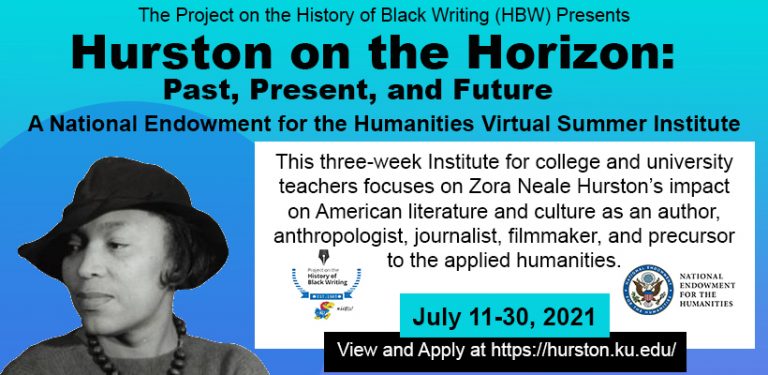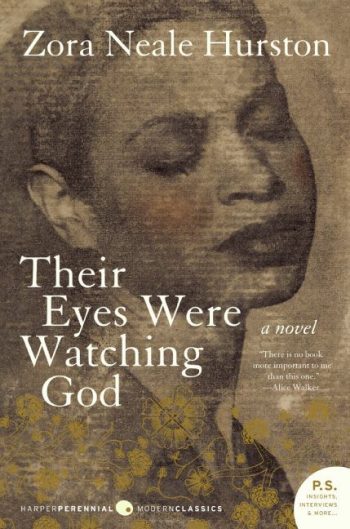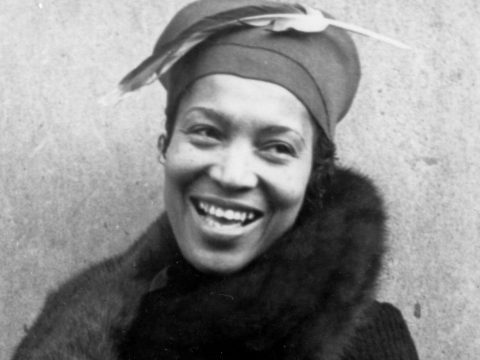This content is being reviewed in light of recent changes to federal guidance.
From the HBW Archives: Zora Neale Hurston
The Project on the History of Black Writing has been focusing on Zora Neale Hurston’s literary work for many years. With our upcoming NEH Virtual Summer Institute “Hurston on the Horizon; Past, Present and Future”, we wanted to share a collection of past HBW blogs focusing on Hurston and her impact in the realm of Black literature. The blogs range from informational blogs on Hurston and her work, to fun pieces such as Hurston’s connection to “swag” culture. We hope you enjoy and will take the time to read through the work we’ve compiled.

Zora Neale Hurston by Kenton Rambsy
Written by longtime HBW affiliate, Kenton Rambsy, this blog recounts what Rambsy learned about the life of Hurston from Wikipedia. Part of the “100 Novels Collection” series Rambsy goes on a journey to learn about authors within the 100 Novels Collection, including Hurston.
100 Black Novels by Decade, 1850-2010 by Kenton Rambsy

Their Eyes Were Watching God
A list of 100 Black Novels within the HBW collection dated between 1850-2010. Compiled by Kenton Rambsy, this collection features a small portion of HBW’s complete novel collection, which holds over 1,000 novels. Hurston’s novel, Their Eyes Were Watching God (1937) is featured within the list.
Zora Neale Hurston and Metaphors of Black Womanhood in Their Eyes Were Watching God by Danielle Hall

Zora Neale Hurston
This blog written by Danielle Hall, analyzes the different metaphors found in Hurston’s Their Eyes Were Watching God dealing with womanhood and femininity. Using quotes and examples from the novel, Hall dissects the different themes and literary devices repeated throughout the novel which focus on Hurston’s exploration of being woman.
Our final blog feature is a fun installment in which Kenton Rambsy breaks down how Zora Neale Hurston has contributed to the popular “swag” movement which has gained popularity in recent years. By annotating Jay-Z’s “Public Service Announcement” Rambsy makes the connection of “swag” between modern rap culture and Hurston’s exploration of the theme in her essay “Characteristics of Negro Expression.”
HBW’s archives are full of rich history and we look forward to your exploration of all the work we have to offer. If you have a further interest in exploring Hurston’s life and work, consider applying to the NEH Virtual Summer Institute, Hurston on the Horizon; Past, Present, and Future. With 30 available spots for college and university educators this institute is set to provide a collaborative learning environment for scholars.